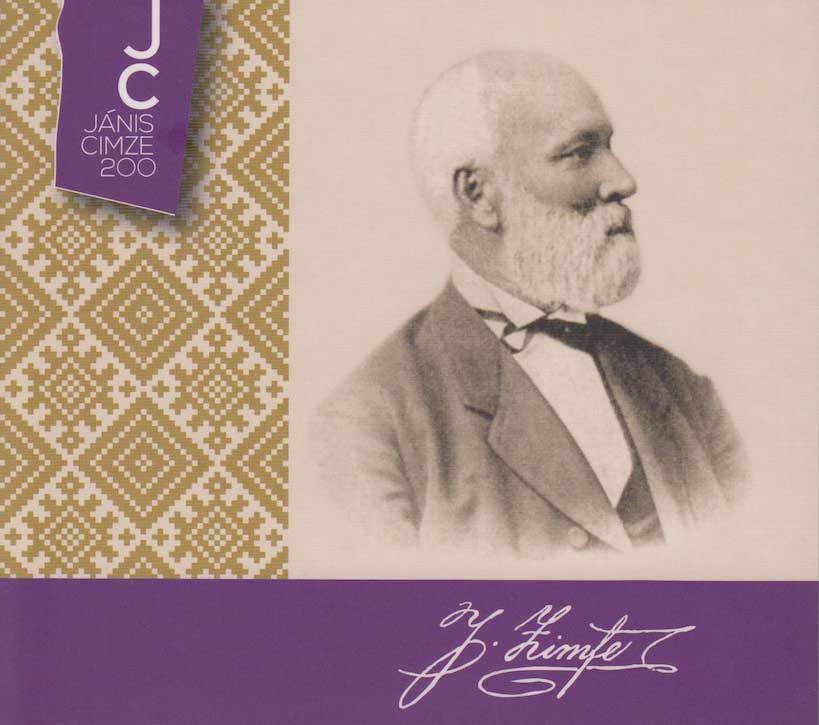Though the Soviet occupation of Latvia put a significant damper on free expression and creativity, certain individuals still managed to express themselves creatively and somewhat freely. Two such individuals, coincidentally, were named Imants. They are composer Imants Kalniņš, whose songs at times included elements of hippie counterculture, and poet Imants Ziedonis, whose poetry was both individual and personal. Both are considered cultural icons in Latvia, and the works of both were pivotal and inspirational during the Latvian Reawakening period of the 1980s.
As both Kalniņš and Ziedonis were of a similar mind and thought, it would be logical that the words of Ziedonis and the music of Kalniņš would be a powerful combination. In fact, Kalniņš wrote many songs based upon the texts of Ziedonis, and these songs resonated and continue to resonate in Latvia. In recognition of this, the Latvian Radio Choir, conducted by Sigvards Kļava, along with a number of guest musicians, released a CD of the choir’s performances of the collaborations of the two Imants, entitled Imants un Ziedonis. The CD includes both songs from more serious works, as well as interpretations of popular songs.
One of Ziedonis’ best known works is “Dziesmu svētkos”, which has become one of the most popular men’s choir songs in Latvia (known as “Mūžu mūžos būs dziesma”, music composed by Valters Kaminskis), and it is interesting to listen to another musical take on these words, this time by Imants Kalniņš (this arrangement by Emīls Zilberts). Though still retaining the celebratory, triumphant air that Kaminskis’ version has, Kalniņš version adds a sense of mystery, even secrecy, brought out in the singing of soloist Gundega Krūmiņa.
A dreamy aura is brought to the song “Kā svece deg” (arrangement by Andris Sējāns), provided by both the magical melody of the flute, played by Andis Klučnieks, complemented by the solo performance of singer Jānis Strazdiņš.
One of the leading popular music artists, Renārs Kaupers of Prāta vētra, has been instrumental in the recent popularization of the works of Ziedonis, via the Viegli charity fund. “Es dziedu viss”, which features Kaupers dueting with choir singer Iveta Romancāne, among others songs on the CD, are from Kalniņš’ oratorio Dzejnieks un nāra, a fantastic tale of Creation, where a poet and a mythical mermaid meet on the boundaries of two worlds. “Es dziedu viss”, at once hymnlike and mystical, captures the otherworldly essence of the mythical tale.
The album closes with the tender “Buramdziesma”, originally performed by Latvian singer Olga Rajecka with the group Turaidas Roze, but this time performed a quartet of singers Gundega Krūmiņa, Iveta Romancāne, Renārs Kaupers, and Jānis Strazdiņš. The lyrics by Ziedonis, perhaps meant in an ironic way, talk of someone staying a friend while ‘rocks grow’ and ‘snails run’. The music of Imants Kalniņš brings out both the sincerity and wry humor that is often contained in Ziedonis’ poetry.
Among the songs are also fragments from an interview with Ziedonis conducted by Ingvilda Strautmane, where Ziedonis muses on such topics such as children, the city of Riga, and friends.
The CD booklet includes a brief essay on the collaboration between Ziedonis and Kalniņš written by Latvian musicologist Orests Silabriedis, biographies of the Latvian Radio Choir and conductor Sigvards Kļava, and a biography of singer Renārs Kaupērs.
The combination of poet Imants Ziedonis and composer Imants Kalniņš resulted in many memorable songs. Drawing on each of their unique characteristics, these creative works, most of which were written during Soviet times, still had a sense of self-expression and individuality that was quite unusual in those times. These works, with the performances of the Latvian Radio Choir and its soloists, as well as the instrumental ensemble, all led by conductor Sigvards Kļava, makes Imants un Ziedonis a memorable record of these two idiosyncratic talents.
For more information, please visit the Latvian Radio Choir website at www.radiokoris.lv
Details
Imants un Ziedonis
Latvian Radio Choir
Latvijas koncerti, 2013
LK-018
Track listing:
- Dziesmu svētkos
- Interlude “Bērni”
- Zvani
- Interlude “Pilsēta”
- Es atnācu klusēdams
- Es dziedu viss
- Interlude “Province”
- Balāde par pārmetumiem
- Aicinājums
- Interlude “Es šonakt degšu sveci”
- Sveces dziesma
- Interlude “Ceļš”
- Kā svece deg
- Interlude “Pavasaris”
- Ūdensroze aust
- Interlude “Skaistums (prieks)”
- Visskaistākās ogas pasaulē
- Interlude “Vēstules”
- Mīlestība divreiz neatnāk
- Interlude “Laiks”
- Bez mīlestības nedzīvojiet
- Interlude “Draugi”
- Balāde par kallu
- Interlude “Taureņi”
- Burbuļojot
- Buramdziesmiņa





